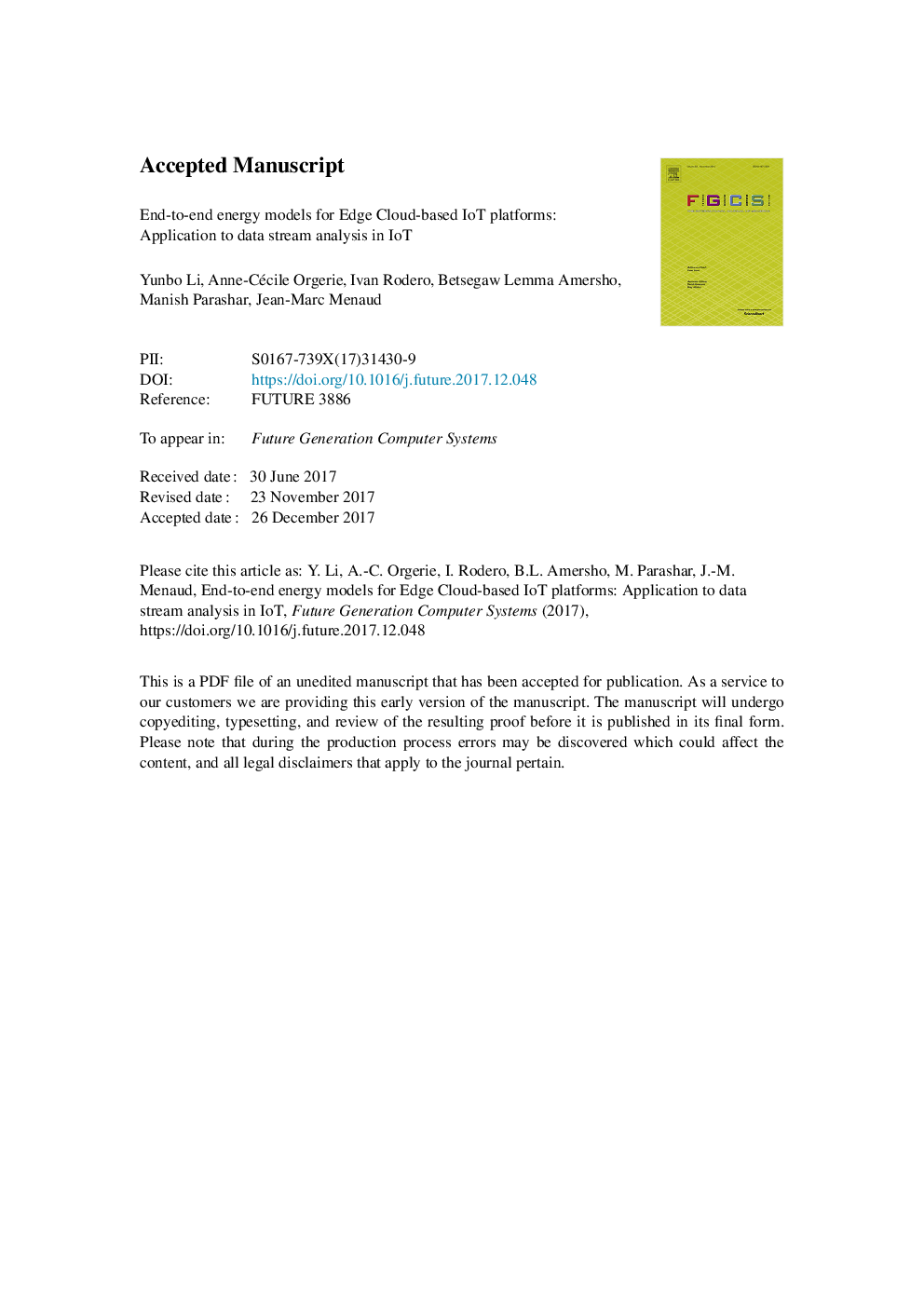| Article ID | Journal | Published Year | Pages | File Type |
|---|---|---|---|---|
| 6872953 | Future Generation Computer Systems | 2018 | 26 Pages |
Abstract
Internet of Things (IoT) is bringing an increasing number of connected devices that have a direct impact on the growth of data and energy-hungry services. These services are relying on Cloud infrastructures for storage and computing capabilities, transforming their architecture into more a distributed one based on edge facilities provided by Internet Service Providers (ISP). Yet, between the IoT device, communication network and Cloud infrastructure, it is unclear which part is the largest in terms of energy consumption. In this paper, we provide end-to-end energy models for Edge Cloud-based IoT platforms. These models are applied to a concrete scenario: data stream analysis produced by cameras embedded on vehicles. The validation combines measurements on real test-beds running the targeted application and simulations on well-known simulators for studying the scaling-up with an increasing number of IoT devices. Our results show that, for our scenario, the edge Cloud part embedding the computing resources consumes 3 times more than the IoT part comprising the IoT devices and the wireless access point.
Keywords
Related Topics
Physical Sciences and Engineering
Computer Science
Computational Theory and Mathematics
Authors
Yunbo Li, Anne-Cécile Orgerie, Ivan Rodero, Betsegaw Lemma Amersho, Manish Parashar, Jean-Marc Menaud,
